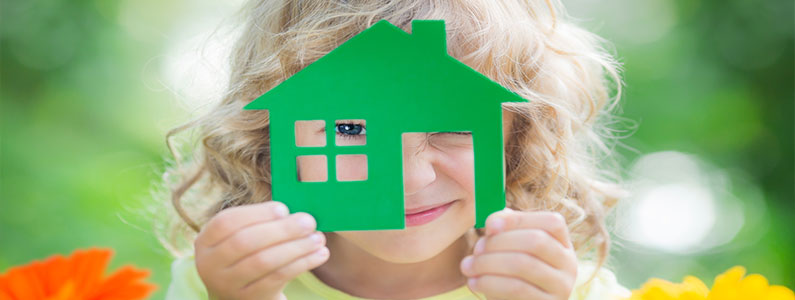Your home’s solar panels and geothermal system probably seem like big selling points to you, but buyers may feel differently.
Whether they’re environmentalists or not, today’s home buyers appreciate hearing about a home’s geothermal system, solar panels, Energy Star-rated appliances or LEED certification.
Home builders and sellers of upgraded homes with “green” features want their prospective buyers to know about these features because they likely spent a good amount of money on them. But do the buyers always care? Will they pay extra — and does “green” actually sell a home? The answer is, it all depends.
The feature, fixture or finish?
Buyers pay for features they can touch, feel and show off to their friends and family — the spa-like bath, media room or a chef’s kitchen. They probably won’t pay extra when it comes to the home improvements they can’t see or appreciate, such as the roof, boiler or new plumbing.
Green features fall somewhere in between. A certain “cool factor” exists for solar panels or an energy-saving thermostat you control from your smartphone. And, for that reason, a buyer will pay extra. But will they pay extra for a home with the less-exciting features like reclaimed hardwood and unique air filtration systems, compared to a similar home lacking these? The answer, for the most part, is no.
Money in my pocket?
Environmentally friendly items, without a cool factor, won’t excite consumers about to spend a chunk of their life savings on a home. But if a green home feature means saving money, either near-term or down the road, buyers usually want to hear more.
In the case of a resale, it’s difficult for the seller to recover the costs, dollar-for-dollar, of solar panels or a high-tech thermostat. The expense of that upgrade is built into the value of the home, just like the remodeled kitchen or other features. But this represents the best scenario for buyers, who can receive the value of the green feature, and appreciate any coolness benefit at the same time.
New construction: Green features vs. no green features
In new construction, the buyer needs to make the ultimate cost-benefit analysis. Boniello Development, successful family builders in Somers, NY, built a selection of similarly sized homes. They marketed and sold many based on the floor plans and site plans, then custom-built each home according to each buyer’s tastes, wants, and desires.
They presented each buyer an option of having a full-house geothermal system for heating and cooling. The cost was around $50,000 extra, but buyers received an immediate $30,000 tax credit from the federal government. What’s more, the cost of the system was built into the cost of their mortgage, requiring zero out of pocket.
The buyers would realize the savings, by way of lower energy bills of a few hundred dollars per month, within five years. Half the buyers chose the system, and the other half didn’t want to pay for it.
Why are some buyers okay with paying more for green features, while others aren’t? It’s a personal and financial decision. Buyers who don’t plan to be in the home for more than a few years may feel they won’t have time to benefit from the cost, and their future buyer likely wouldn’t pay extra, particularly in a down market. Those in the home for the long haul, or with a commitment to the environment, will surely be the target buyers.
Smaller market, but a growing one
A growing subset of today’s market is concerned for the environment, wants to give back and is less concerned about the financials of green features. This group will pay extra, whether the features are cool or not. The cost savings, while a nice bonus, won’t drive their decision-making.
Green features are here to stay, and today’s consumers will see them when shopping for homes. Consider the impact on the environment alongside the cost savings, and weigh that with your particular real estate decision. While ultimately a personal consideration, like location, floor plan and bedroom count, green features are increasingly becoming a choice worth prioritizing.
–ZILLOW

